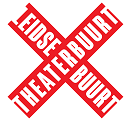History
History of the Leidseplein square
The Leidseplein square and the Leidsebuurt came into existence after the city expansion of 1663. Because of the growing population, the decision was made during the second half of the 17th century that Amsterdam would expand the existing network of canals towards the East, and new streets and canals were built perpendicular to the existing canals.
The name Leidseplein
The name Leidseplein was derived from the Leidsepoort, the city gate where the road leading to Leiden began. This city gate was demolished in 1862.
Leidseplein, wagon parking area
The Leidseplein was one of the first big horse-drawn wagon lots. Farmers and merchants entering the city through the Leidsepoort could park their horse and wagon on the square, before heading into the city to conduct their business on foot. As such, there were a great number of livery stables, wheelwrights, farriers and inns around the square. In 1774, the first stadsschouwburg (city theatre) was built on the Leidseplein.
The first tram and bus
The industrial revolution and the accompanying new types of transportation changed the look of the city, including the Leidseplein and the Leidsebuurt. On 17 August 1900, the first electric tram line from the Leidseplein to the Brouwersgracht opened for service. Twenty-two years later, the first bus would depart from the Leidsbosje to Betondorp. It was the electric tram in particular that changed how Amsterdam’s streets looked, not just because of the rails, but also because of the overhead cables and tram stops that were needed for this new mode of transport. Bridges had to be widened to accommodate the trams and cars. The roads along the Kleine-Gartmanplantsoen and the Stadsschouwburg (city theatre) were both widened during the first decades of the twentieth century.
Leidseplein, the car park
The increasing numbers of cars created a parking problem. From the 1960s on, squares that did not serve a specific function were repurposed one-by-one to create parking spaces. The Leidseplein was one of these squares.
From the early 70s, the Leidseplein became partially car-free, after the Leidsestraat was shut down to vehicular traffic, thereby ending the Leidseplein’s service as a parking area.
Entertainment
The Leidseplein and surrounding area has, despite its changing streetscape and usage through the centuries, remained a place where travellers arrive, leave and transit through the city, and where the great variety of services and functions causes many different people to pass and meet each other – a true hub between the city districts Centrum, West and Zuid. In recent decades there has been a noticeably greater emphasis on the Leidseplein as a hotspot for culture, entertainment and nightlife.





